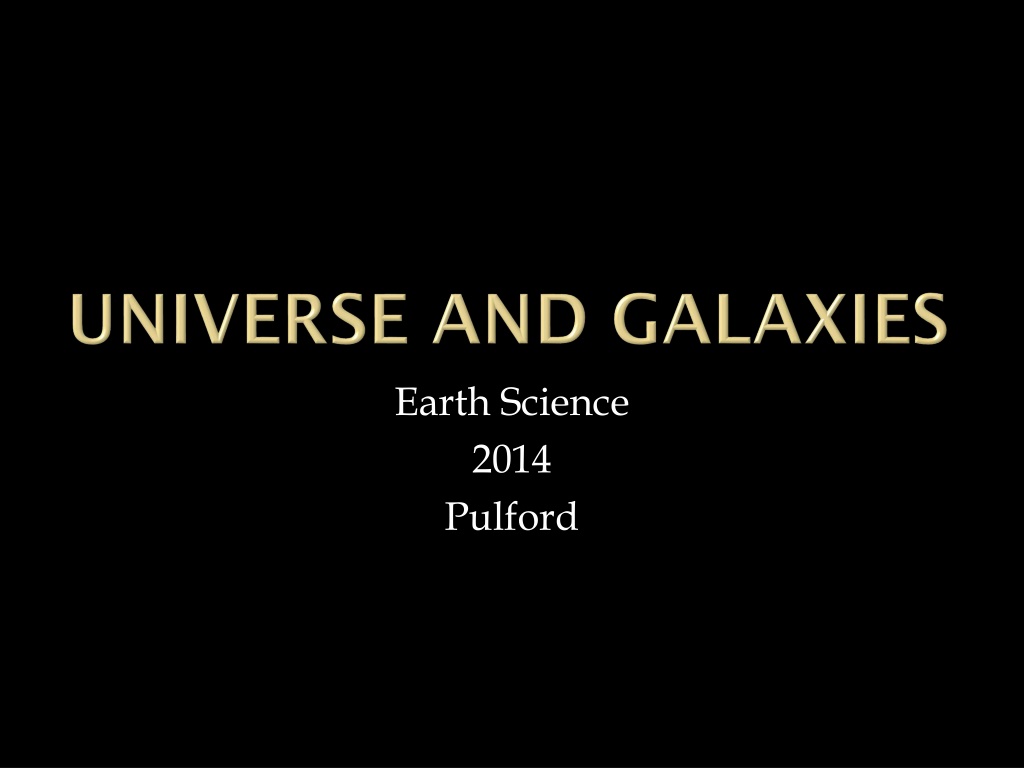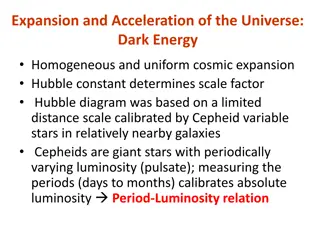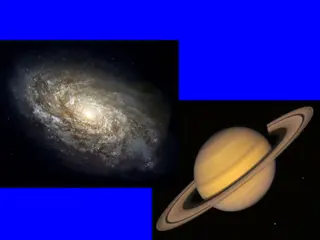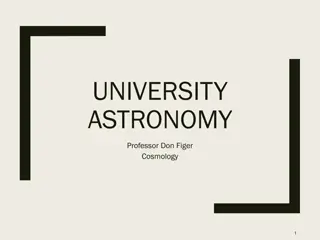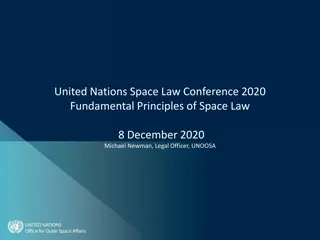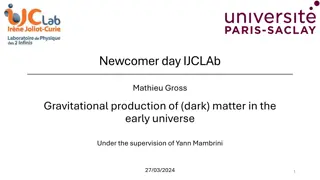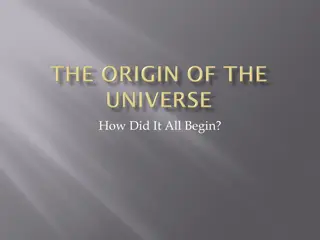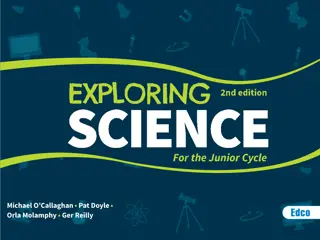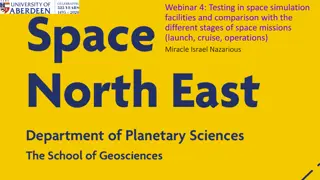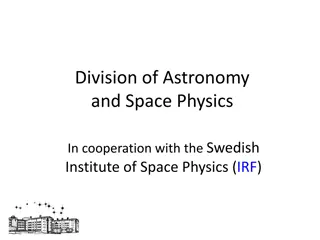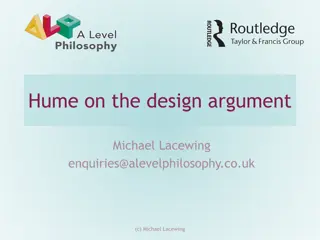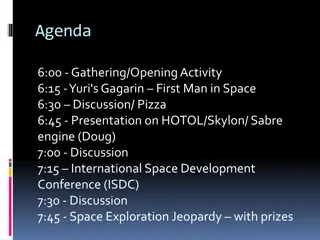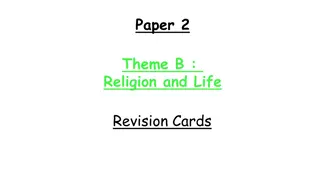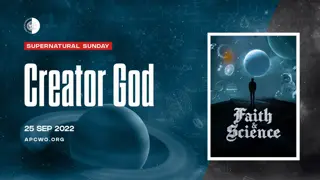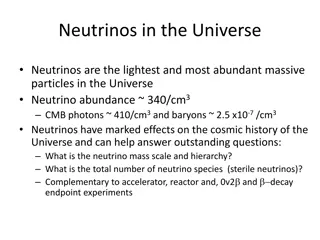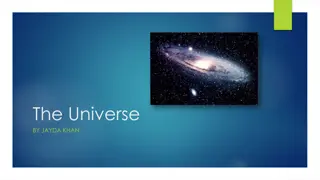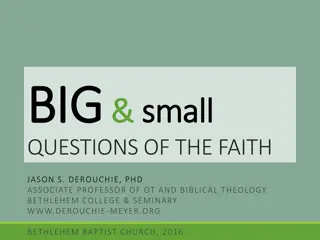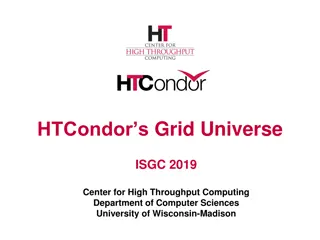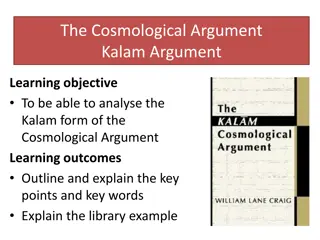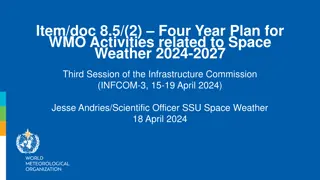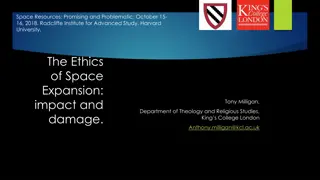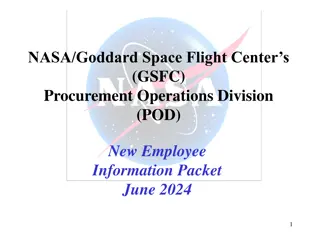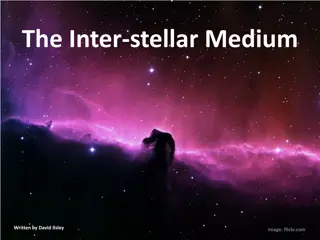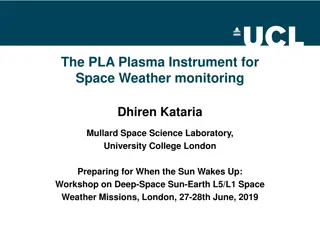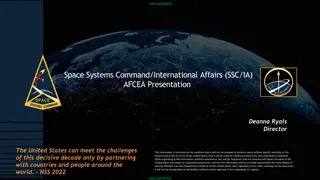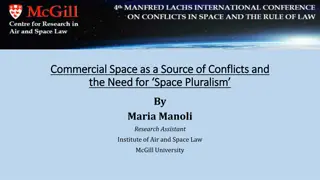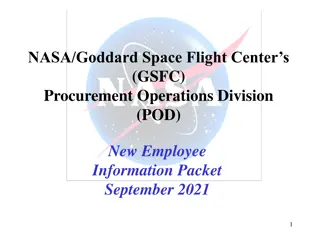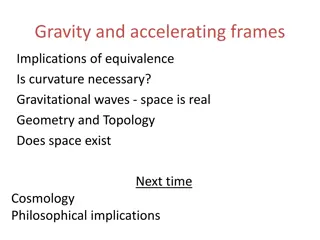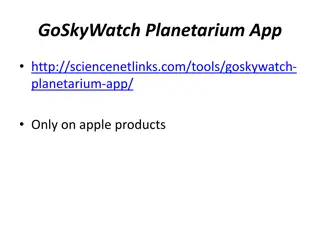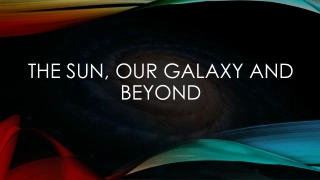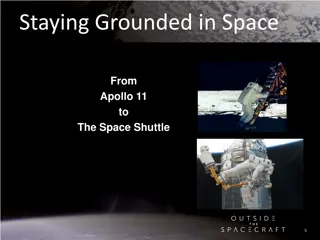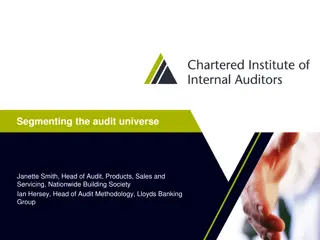Discovering the Universe: A Journey Through Space and Time
Astronomers explore the vast cosmos, classifying galaxies into Spiral, Elliptical, and Irregular types. Our solar system resides in the Milky Way, a massive spiral galaxy. The accepted theory of the Big Bang explains the universe's origin, supported by Edwin Hubble's observations. Delve into the mysteries of the universe, from galaxies to cosmic background radiation.
Download Presentation

Please find below an Image/Link to download the presentation.
The content on the website is provided AS IS for your information and personal use only. It may not be sold, licensed, or shared on other websites without obtaining consent from the author. Download presentation by click this link. If you encounter any issues during the download, it is possible that the publisher has removed the file from their server.
E N D
Presentation Transcript
Earth Science 2014 Pulford
Astronomers define the universe as all of space and everything in it.
A galaxy is a huge group of single stars, star systems, star clusters, dust, and gas bound together by gravity. There are billions of galaxies in the universe. The largest galaxies have more than a trillion stars.
Astronomers classify most galaxies into the following types: Spiral Elliptical Irregular
Our solar system is located in a spiral galaxy called the Milky Way. From the side, the Milky Way would look like a narrow disk with a large bulge in the middle. But from the top view, the Milky Way would have a spiral, pinwheel shape.
Accepted theory about how the universe was created About 13.7 billion years ago, the universe was no larger than the period at the end of this sentence. This tiny universe was incredibly hot and dense. The universe then exploded in what astronomers call the big bang.
Edwin Hubble was able to study other galaxies and see if the were moving towards us or away from us He could also tell us how fast they were moving (most galaxies are moving away from us) Hubble s law states that the farther away a galaxy is, the faster it is moving away from us. Hubble s law strongly supports the big bang theory.
Cosmic Background Radiation In 1965, two American physicists accidentally detected faint radiation on their telescope. This mysterious glow was coming from all directions in space. Scientists later concluded that this glow is the leftover heat energy from the big bang. This energy was distributed in every direction as the universe expanded.
Evidence THEORY
Stars are classified according to their color, temperature, size, composition, and brightness. Color: determined by the temperature (coolest) Red Red-Orange Yellow White Blue (hottest) 0C 3000 4500 5750 10,000 50,000 Size: Even though they all appear the same to us, they can be very different Composition: Helium, Hydrogen, Sodium, Calcium Brightness: depends on its size and temperature Apparent Brightness: Brightness as seen from Earth Absolute Brightness: Brightness of the star if we were all at equal distances to every star
